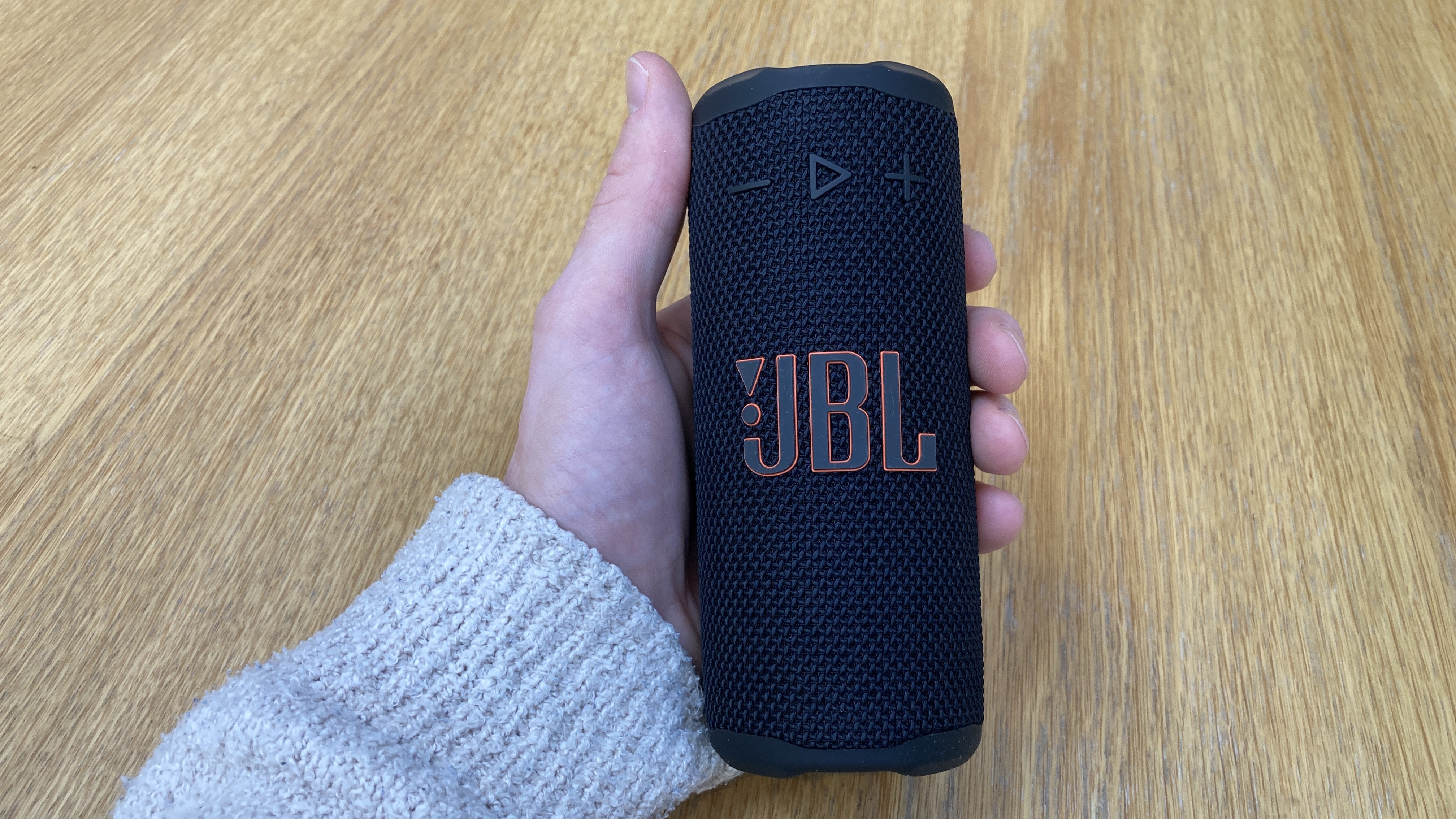Hisense U8Q vs Samsung QN90F: which Mini LED TV should you buy?
Hisense's 2048-zone spec monster takes on Samsung's processing powerhouse – but which set comes out on top?
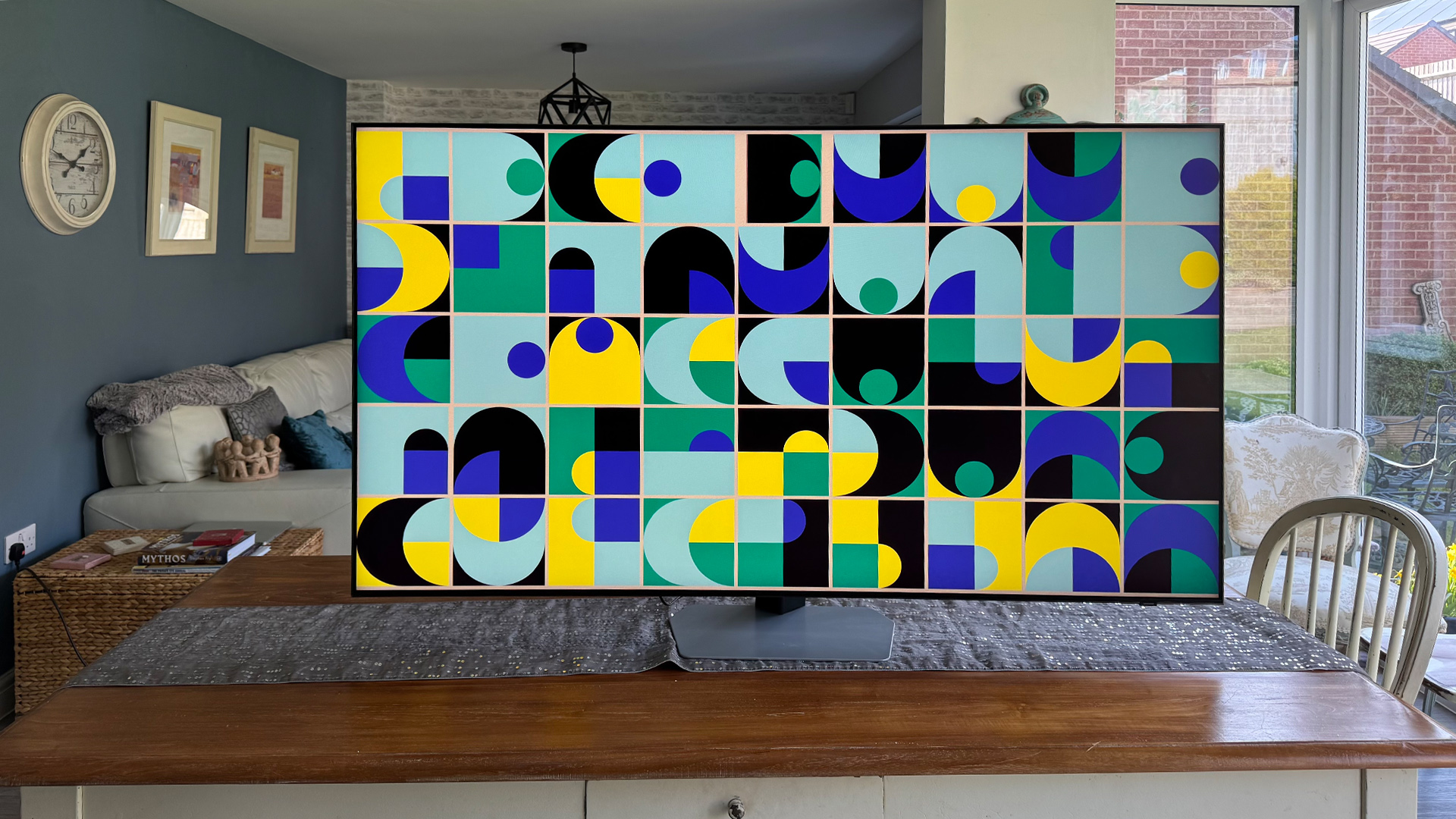
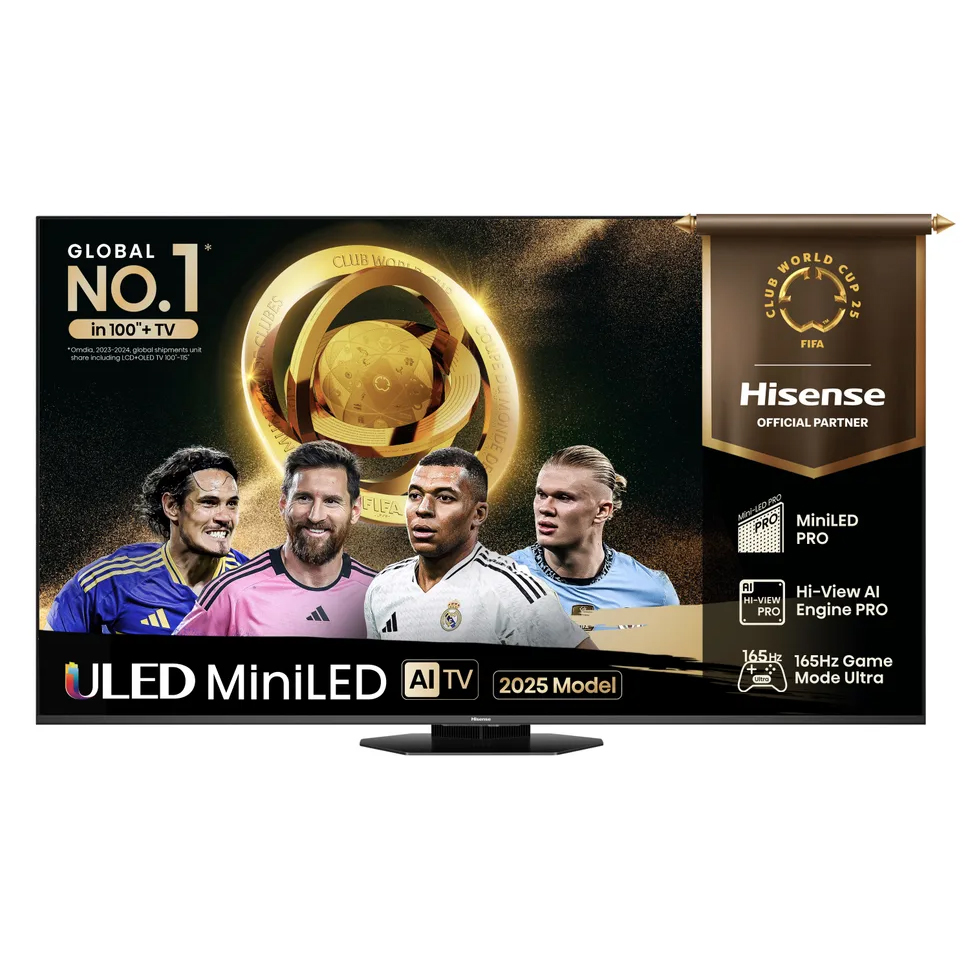
Screen sizes: 65 inches (also available in 55, 75, 85, and 100 inches)
Type: Quantum Dot LCD
HDMI inputs: x 3 (all 48Gbps HDMI 2.1)
Gaming features: 4K/165Hz, 4K/120Hz, VRR, ALLM, Dolby Vision game mode
Dimensions (hwd, without stand): 84 x 145 x 4.5cm
The Hisense wins on raw specs and peak wow factor when everything aligns, but the Samsung is more accomplished overall – it's consistent, requires minimal tweaking, and extracts more from fewer zones through superior processing.
Pros
- Spectacular brightness and colour
- Impressive black levels and contrast
- Meaty audio
Cons
- Various backlight distractions
- Slightly inconsistent feel to pictures
- Feels a bit expensive
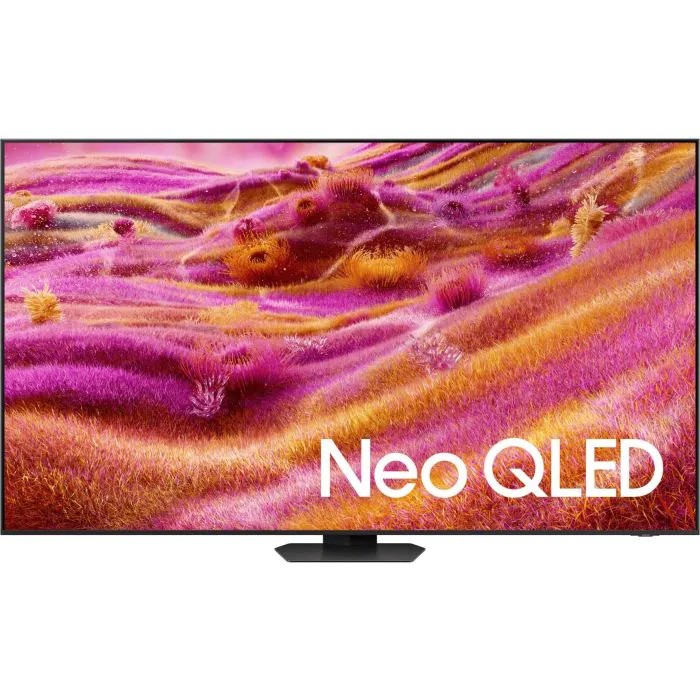
Screen sizes: 65 inches (also available in 43, 50, 55, 75, 85, and 98 inches)
Type: Quantum Dot LCD
HDMI inputs: x 4 (all 48Gbps HDMI 2.1)
Gaming features: 4K/165Hz, 4K/120Hz, VRR, ALLM
Dimensions (hwd, without stand): 83 x 145 x 2.7cm
The QN90F takes a more refined approach with just 720 zones but exceptional processing and an anti-glare filter that works brilliantly in bright rooms. It delivers consistently excellent pictures and more polished overall performance.
Pros
- Outstanding backlight control
- Well designed Standard and Filmmaker Modes
- Excellent gaming display
Cons
- No Dolby Vision
- Expensive by LCD standards
- Needs tweaking to look/sound its best
If you’re after one of the best TVs to upgrade your home set-up, there’s no shortage of options out there. While many have their eyes on the best OLED TVs, there’s no denying how far the best Mini LED TVs have come over the past few years.
With that in mind, we’re pitting two Mini LED sets – the Hisense U8Q and Samsung QN90F – against each other, to see which one deserves a spot on your shortlist.
We’ve thoroughly reviewed and rated both models, so you can rest assured that everything below is based on our expert experience.
Hisense's U8Q arrives with some truly eye-watering numbers – 2048 dimming zones and claims of 5000 nits brightness, while Samsung's QN90F takes a different approach, offering fewer zones but decades of LCD expertise and an anti-glare filter that works remarkably well.
Specs aren’t everything though, so with the scene set, let's dive into round one..
Hisense U8Q vs Samsung QN90F: price
The 65-inch Hisense 65U8QTUK is currently priced at £1699 / AU$2999, while Samsung's 65-inch QN90F carries a price tag of $1899 / £1899 / AU$2999.
It’s important to note that we could see price reductions for both sets as time goes on, especially during sales events like Black Friday.
The latest hi-fi, home cinema and tech news, reviews, buying advice and deals, direct to your inbox.
That pricing difference becomes more significant when you consider what else is available at these price points. The Hisense, for example, faces competition from the TCL 65C8K at just £1199 / AU$1750, while the Samsung contends with excellent OLED alternatives such as the LG C5 and Samsung S90F, both of which launched within range of the QN90F's list price.
Size options differ between the two models, too. The Hisense U8Q range spans 55-inch, 65-inch, 75-inch, 85-inch, and 100-inch variants, though it's worth noting that not all screen sizes use the same panel type – some have IPS panels rather than the VA panel found in the 65-inch model we tested.
Samsung offers the QN90F in 43-inch, 50-inch, 55-inch, 65-inch, 75-inch, 85-inch, and 98-inch sizes.
Hisense U8Q vs Samsung QN90F: design and build
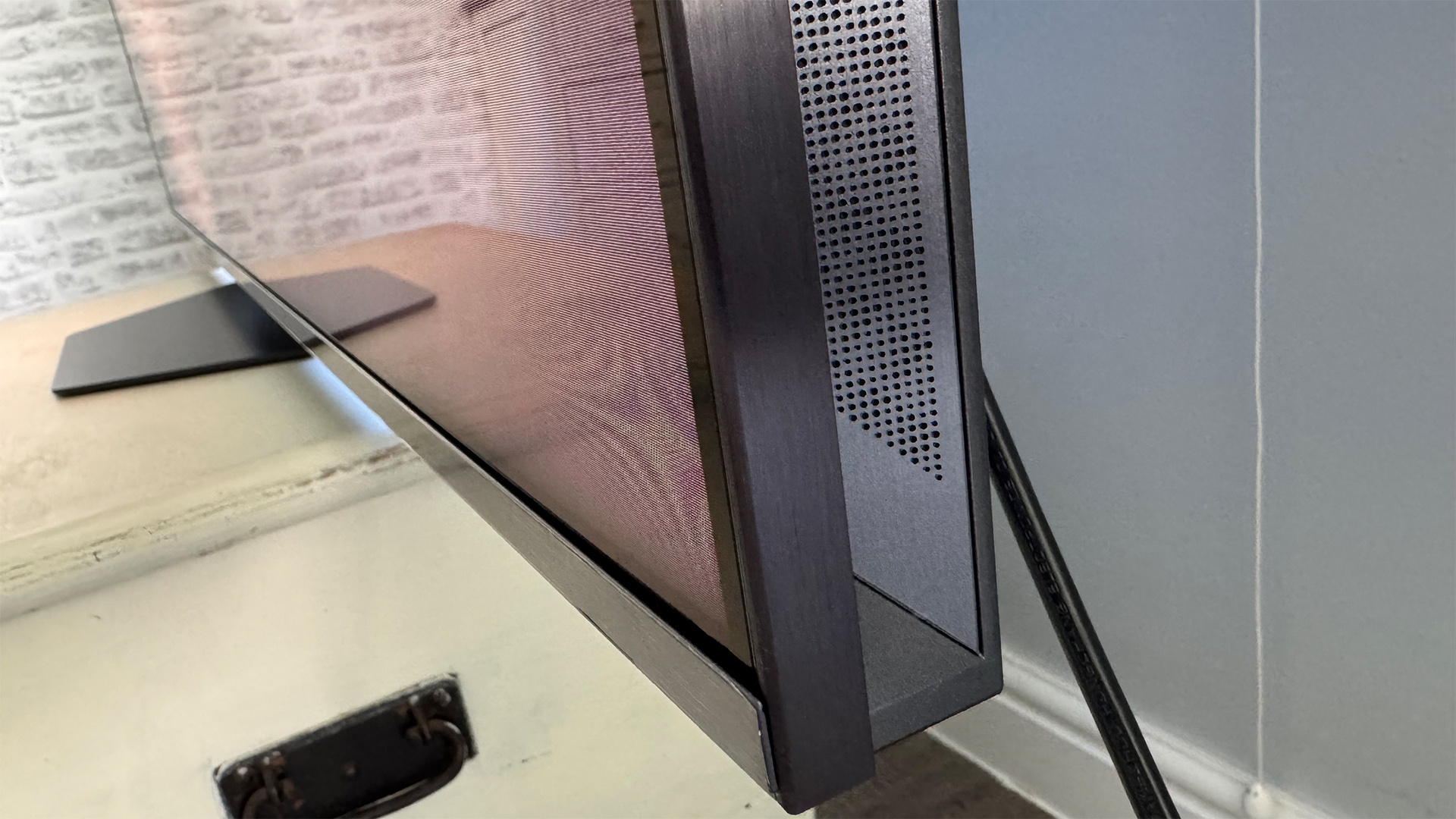
There’s little to differentiate most TVs these days, from the front at least. Having said that, the Hisense U8Q is chunky – not in a bad way, but in a way that makes it clear there's serious hardware inside.
The rear section bulges out substantially to house all the components, and it's properly heavy even before you attach the robust metal footplate stand. The bezel around the screen stays slim and modern, but there's no disguising this TV's bulk.
That heft points to serious internals though, reinforced by the metal-covered speaker outlets in the extended side panels. The stand adjusts for height too, potentially leaving enough room underneath for a soundbar.
Even the remote control is unusually large by today's standards, though it wears its size well with a brushed metallic black finish offset by a gleaming silver navigation circle. There's also a handy solar panel at the bottom, so you'll never need batteries.
Samsung takes the opposite approach. The QN90F is all about sleek minimalism – narrow screen frame, slender rear, and a beautifully finished silver metal stand that's compact enough for slender furniture.
It feels solidly built despite the svelte profile, and unlike previous Samsung flagship 4K LCD TVs, there's no external One Connect box here – everything's integrated into the main chassis.
You get two remotes with the Samsung: a traditional button-heavy one and a stripped-back smart remote.
Most people will prefer the smart option – fewer buttons to learn, a solar panel on the back for self-charging, and a microphone for voice control that works well.
Hisense U8Q vs Samsung QN90F: screen and picture quality

On paper, the Hisense U8Q is a spec monster. Its VA-type LCD panel is illuminated by Mini LEDs capable of pumping out a claimed 5000 nits of peak brightness – a truly eye-watering figure.
Backing this up are 2048 separate local dimming zones in the 65-inch model, all controlled by Hisense's new Hi-View AI Engine Pro processor. Quantum Dot technology delivers the colours, maintaining saturation even at these extreme brightness levels.
Samsung's QN90F appears more modest with its 720 local dimming zones – less than a third of the Hisense's count. However, those zones are managed by 128 AI neural networks (108 more than last year's model), and the VA panel uses what Samsung calls a Real Quantum Dot Display, where blue LEDs feed red and green Quantum Dot sheets.
The standout feature, though, is Samsung's remarkable anti-glare filter, which suppresses reflections to an almost unbelievable degree.
Fire up something punchy in HDR on the Hisense, and you're immediately hit by just how dazzling this screen can be. Bright highlights sear the retinas – we're talking among the most intense peaks we've seen from any TV.
Even more impressively, those bright objects can sit against inky black backdrops without greying them over or creating obvious halos around them. That massive zone count and improved processing deliver contrast that feels cutting-edge, with black levels that possess impressive depth and richness.
But spend time with the Hisense in its Standard mode, and cracks start to appear. Very dark scenes can look hollow in their deepest corners, losing subtle shadow detail and leaving dark holes in the picture rather than properly integrated darkness.
The aggressive contrast occasionally causes silhouetting too – objects against bright backgrounds become mere shadows, losing their detail and depth. Skin tones prove particularly tricky, sometimes looking greenish and plasticky in one scene, then spot-on in another.
The Dynamic Tone Mapping can also be overzealous. Bright highlights occasionally clip noticeably, losing their subtle detail, or you'll see sudden brightness jumps mid-shot where there should only be gentle variations.
Switch to Filmmaker Mode hoping for more accuracy, and those fantastic black levels suddenly desert you – dark scenes turn noticeably grey and significantly dimmer overall. There's a pinkish-red tone creeping in too, and relatively faint colours can look flat and blue.

The Samsung QN90F tells a different story. From the off, it just looks more polished and refined. Yes, it delivers seriously high brightness and rich, deep blacks, but it's the way it handles light extremes within the same frame that really impresses.
Those 720 zones, guided by all that AI processing power, remove almost all traces of haloing around bright objects without needing to dim them down – something Samsung LCD TVs have traditionally struggled with.
Bright highlights retain bags of detail and subtle shading rather than clipping to hollow white, while near-black information stays clean without backlight noise or instability.
The Standard preset's vibrant colours have enough subtlety to avoid looking cartoonish – there's a sense of solidity to objects and depth to backgrounds that feels almost three-dimensional. It's the sort of effect Sony's Cognitive XR processor achieves, except the Samsung underpins it with more brightness and colour volume.
With some Picture Clarity tweaking (turn off Auto, select Custom, deactivate noise reduction, and set judder and blur reduction to level three or four), motion handling stays sharp even with fast 24p movie sequences.
The Filmmaker Mode is impressive too, delivering accurate images without sacrificing black level or backlight control like most LCD TVs do. And when bright HDR content fills the screen, the Samsung maintains more consistent brightness than OLED alternatives – a real boon in well-lit rooms.
The upscaling of HD sources deserves special mention as well. The Samsung adds millions of extra pixels in real time with such precision that clean HD sources look almost indistinguishable from native 4K.
You'll want to nudge Shadow Detail up a point or two from default to stop very dark areas crushing out detail, and switch Local Dimming from Standard to High or Low to eliminate some distracting brightness jumps during sharp scene transitions.
As always, the absence of Dolby Vision remains a shame, though Samsung's Dynamic Tone Mapping with HDR10 content works brilliantly in practice.
Hisense U8Q vs Samsung QN90F: features and processing
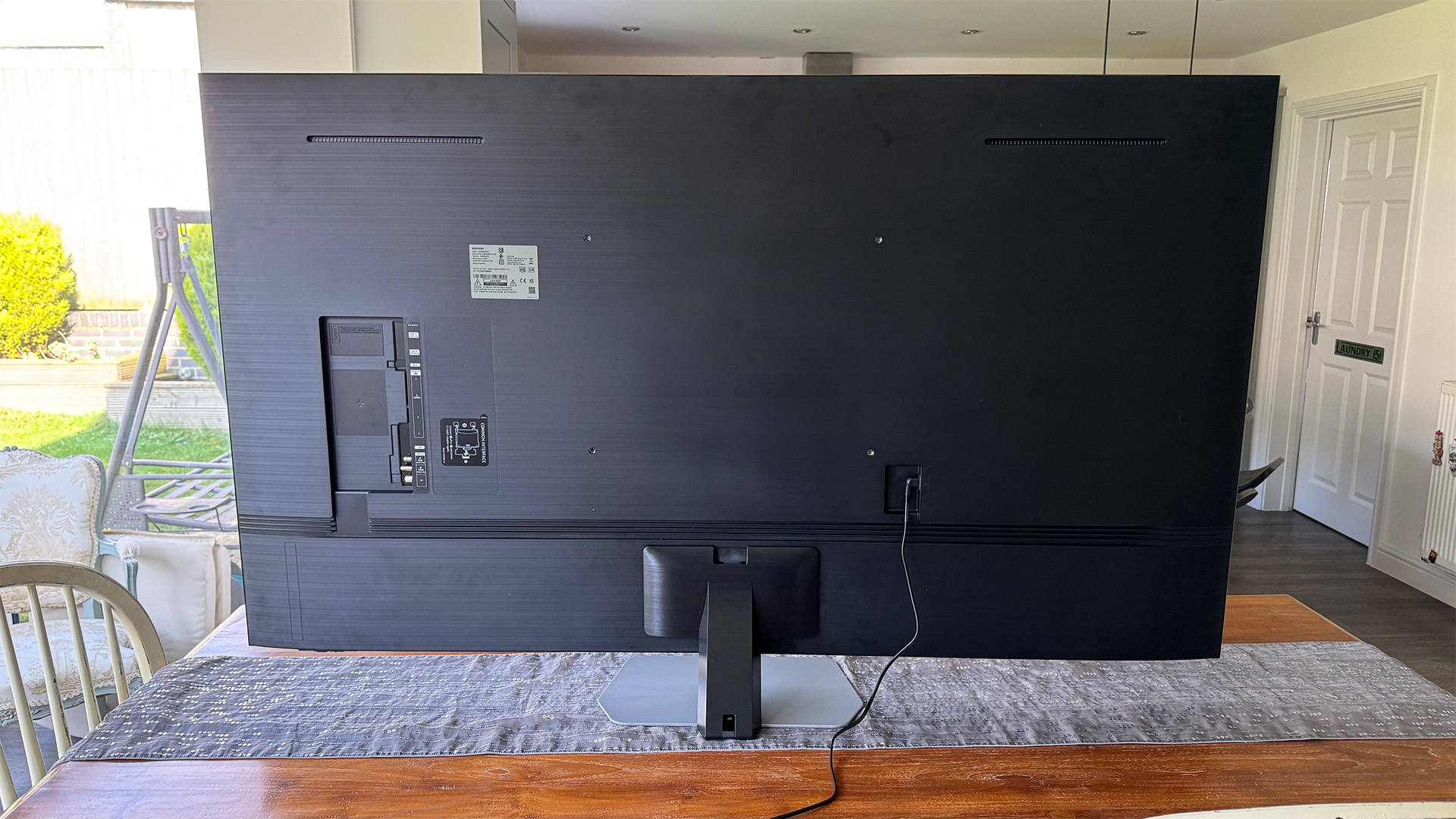
Gaming enthusiasts will find both televisions well-equipped for consoles and PCs. The Hisense U8Q supports refresh rates up to 165Hz through its Game Mode Ultra technology, with VRR support extending to that maximum figure, including AMD FreeSync Premium Pro format.
Input lag measures a respectable 13.7ms at 60Hz, dropping to just under 7ms with 4K/120Hz feeds, and a dedicated gaming menu offers genre-themed presets, aspect ratio options, a virtual aim point, and mini-map enlargement.
All three HDMI ports support the full gaming feature set, though the presence of only three HDMIs – rather than the now-standard four – proves disappointing. A DisplayPort connection disguised as USB-C provides an unusual alternative.
The Hi-View AI Engine Pro processor boasts a 1.6x faster CPU, 2.2x faster GPU, and 1.5x faster NPU compared to its predecessor. The U8Q also carries IMAX Enhanced accreditation, and includes a Filmmaker Mode for industry-standard presentation.
Smart features come via Hisense's VIDAA system in the UK and Australia, which remains visually basic but proves easy to navigate and includes all major streaming services, plus Freely for livestreaming Freeview channels.
Samsung's QN90F matches the Hisense with 4K/165Hz support across all four of its HDMI 2.1 ports – a notable advantage.
Input lag drops to just 9.8ms at 60Hz, essentially halving with 120Hz content. VRR support includes AMD FreeSync Premium Pro, and ALLM switching activates automatically. A comprehensive Game Bar menu also provides genre presets, crosshair overlay, mini-map zoom, and super/ultra-wide aspect ratios for compatible PC games.
A dedicated Gaming Hub accessible from the Tizen home screen consolidates streaming and physical game services.
The NQ4 AI Gen3 Processor features a 2x faster NPU, 2.1x faster GPU, and 17 per cent faster CPU than the 2024 model. AI-enhanced processing focuses on upscaling HD and SD content, dynamically tone mapping HDR, predicting motion trajectories for improved clarity, upgrading SDR to HDR, and enhancing colour saturation.
All processing enhancements can be disabled, and a Filmmaker Mode preset turns off most processing by default for purists.
Samsung's Tizen smart platform carries an extensive array of video streaming services, including UK terrestrial broadcaster catch-up apps on an individual basis rather than through Freeview Play or Freely umbrellas.
HDR format support differs between the models. The Hisense handles HLG, HDR10, HDR10+ and Dolby Vision, while the Samsung supports HLG, HDR10, and HDR10+, but not Dolby Vision. Both sets include ambient light sensors for adaptive HDR presentation.
Hisense U8Q vs Samsung QN90F: sound
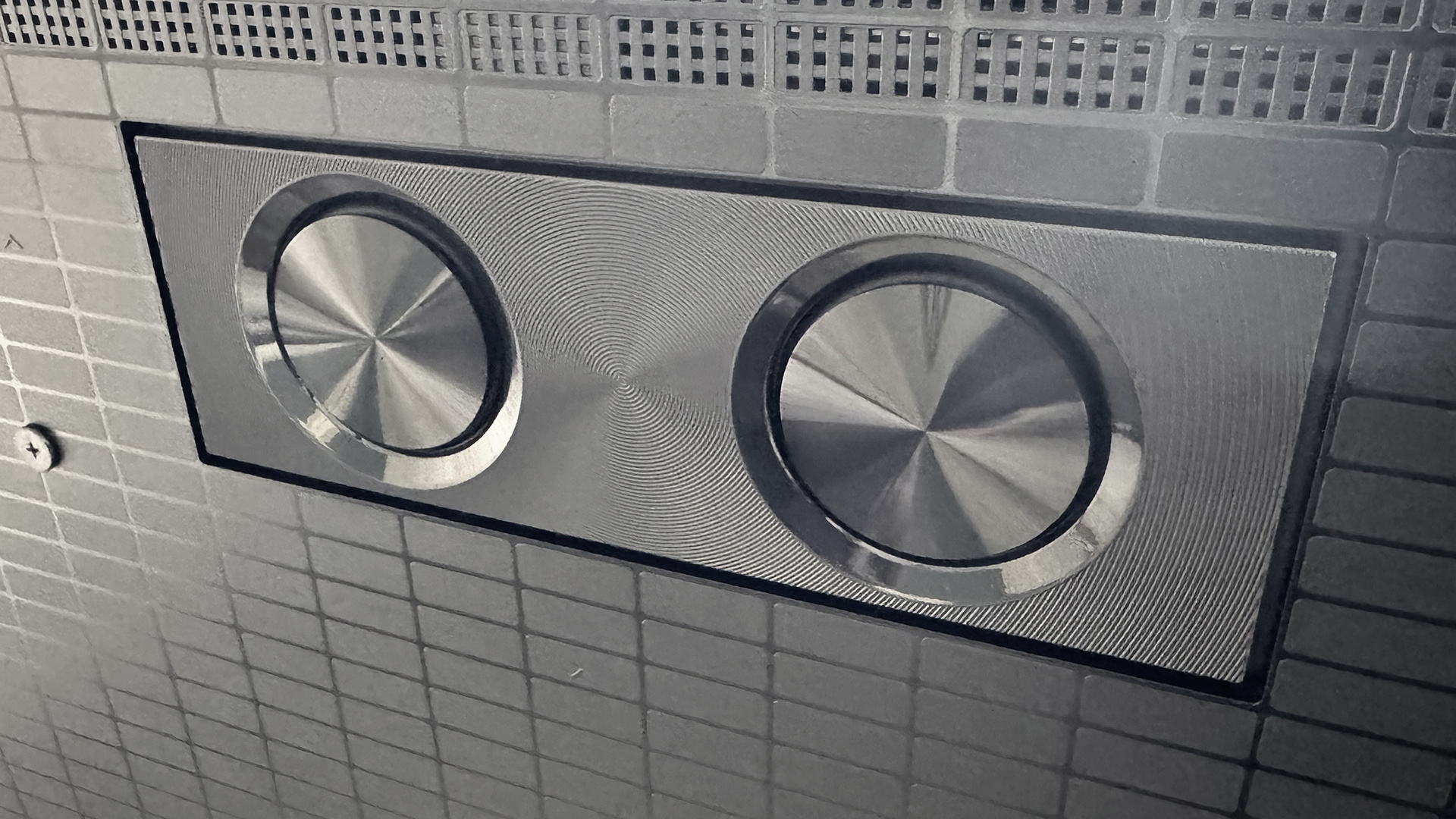
The Hisense U8Q doesn't just look like it means business – it sounds like it too. With a claimed 70W of power spread across a 4.1.2-channel set-up, it's packing more audio hardware than most TVs.
Speakers sit on the sides, two drivers fire upwards, and there's a subwoofer built into the rear. If you've got a compatible Hisense soundbar, the Hi-Concerto feature also lets the TV's speakers work alongside it, rather than being overridden.
First impressions from all this audio hardware are strong. The Hisense gets properly loud – loud enough to match those big, impactful pictures without sounding strained.
Sound effects project far enough away from the screen to create a large, immersive soundstage that doesn't feel forced or gappy.
Effects are placed crisply around that soundstage too, while solid bass from that hefty subwoofer teams up with respectable treble extension to handle dense, complex soundtracks with real power and force. Put something like the TCL C8K next to it, and that set suddenly sounds rather lightweight and polite.
But the Hisense doesn't quite know its limits. That heavy bass can go too far when sustained low-frequency sounds push it hard – you'll hear distortion, buzzing and dropouts when things get really tough.
The bass sounds coarse compared to other elements of the soundstage, and it's lethargic, struggling to respond to deep percussive beats with any real rhythm or clarity.
Some ambient effects – wind in trees, heavy breathing – can sound overly prominent in the mix. And while dialogue comes through clean and clear, it tends to stay stuck in the middle of the screen rather than moving around naturally.
In contrast, the Samsung QN90F initially sounds rather underwhelming. Out of the box, everything feels small in scale and trapped inside the TV's chassis – not the sort of sound those cinematic images deserve. But activate the Amplify sound mode, and it transforms. Suddenly, sound projects clear of the screen, painting a much larger and more engaging soundstage.
This expansion properly unlocks Samsung's Object Tracking Sound system, which combines clever processing with speakers arranged around the TV's bodywork. Now dialogue and noisy objects seem to produce their sound from just the right spot on or off the screen – it's effective.
The Amplify mode coaxes much more low-frequency response out too, giving action movie soundtracks a heftier sense of scale and dynamic range. Impressively, this happens without causing excessive crackling, buzzing or dropouts from the bass.
The Q-Symphony feature is a neat touch as well – if you add a Samsung soundbar, the TV's speakers can work in tandem with it rather than just shutting down. There's also AI-powered voice amplification, which isolates vocals so you can lift their volume for clarity without cranking everything else up.
It's not perfect, mind. Trebles can sound a bit electronic and peaky, and ultimately, the QN90F's audio doesn't quite match the satisfaction level of some other 2025 Samsung models.
But properly configured with Amplify mode activated, it's a strong performance by television standards, and certainly more disciplined than the Hisense's occasionally unruly approach.
Hisense U8Q vs Samsung QN90F: verdict
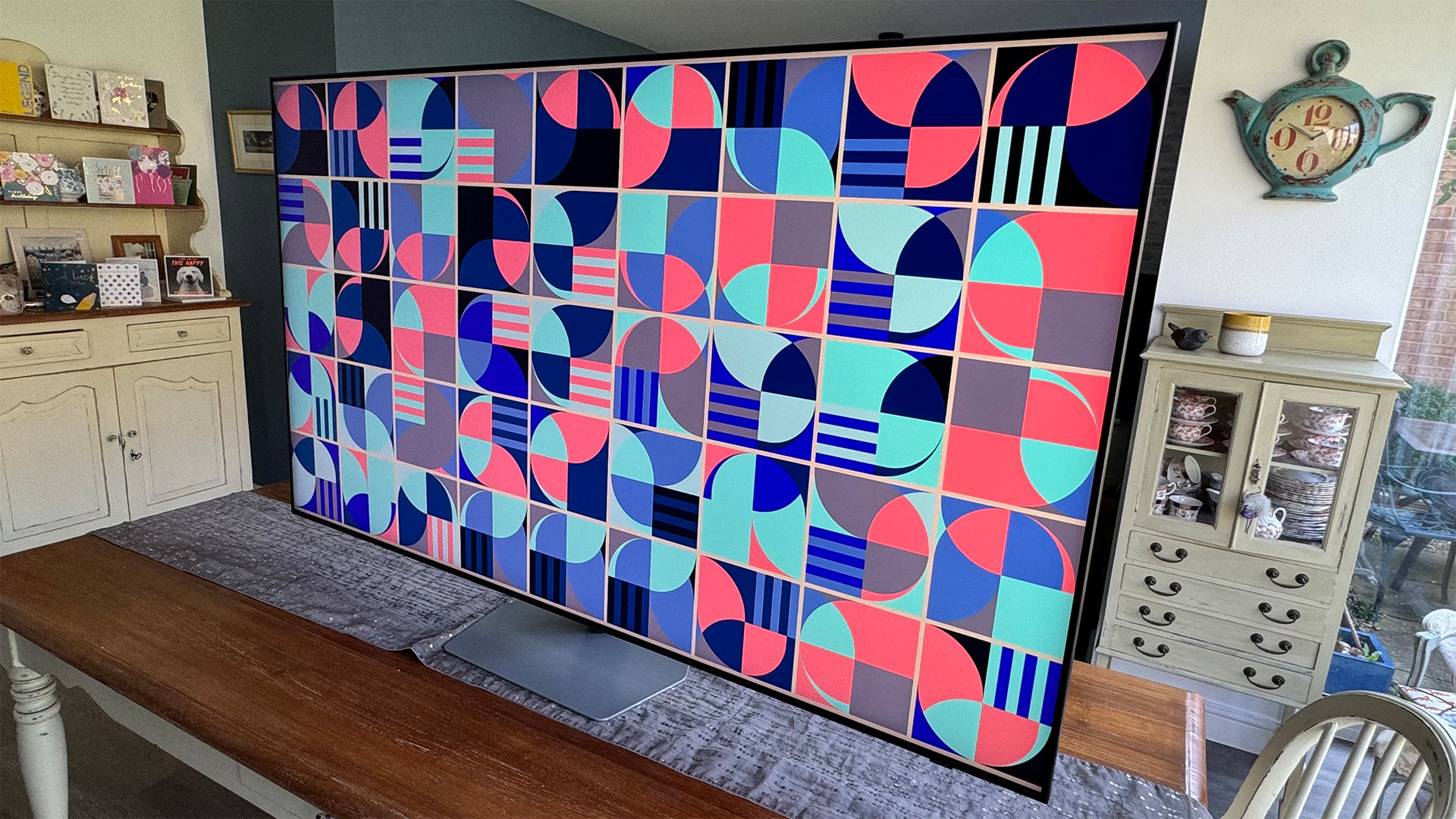
Both of these TVs prove that Mini LED tech is very much alive and well in 2025, though they go about it in completely different ways.
The Hisense U8Q impresses with its spectacular specs and delivers impressive moments with its combination of extreme brightness, impressive contrast, and sophisticated backlight control in Standard mode.
When everything clicks – particularly with punchy HDR content – it produces images that feel cutting-edge. The hefty build, comprehensive gaming features, and ambitious audio system all reinforce its premium credentials.
But it's inconsistent. Colours behave unpredictably, dark details get crushed, and Filmmaker Mode loses much of what makes the Standard mode so impressive. At £1699 / AU$2999, it's also caught in an awkward spot – cheaper than the Samsung, but pricier than excellent alternatives like the TCL C8K, and within spitting distance of mid-range OLED sets that some buyers will inevitably prefer.
Overall, then, the Samsung QN90F is the more polished option. Everything just feels more refined and thought-through.
The picture quality stays consistently excellent whether you're in Standard or Filmmaker mode, with processing that squeezes every last drop of performance from those 720 zones.
That anti-glare filter is also transformative if your TV lives in a bright room. The compact design, comprehensive features, and decades of Samsung LCD know-how all show through. And while the £1899 / $1899 / AU$2999 list price looks steep, occasional discounts make it much more appealing.
So who should buy which? If you're a spec fiend who loves the idea of 2048 zones and 5000 nits, and you don't mind spending time tweaking settings to get the best from your TV, the Hisense U8Q offers remarkable bang for buck. It's got real wow factor when everything aligns.
But if you want a TV that works brilliantly out of the box, handles everything you throw at it with consistent excellence (and particularly if you're putting it in a bright room where that anti-glare filter can work its magic), the Samsung QN90F is the more accomplished all-rounder for most people. It excels at everything rather than excelling at some things and struggling with others.
MORE
Read our Hisense U8Q (65U8QTUK) review
QLED vs LED: the two TV panel technologies compared
Read our Samsung QN90F (QE65QN90F) review

You must confirm your public display name before commenting
Please logout and then login again, you will then be prompted to enter your display name.
